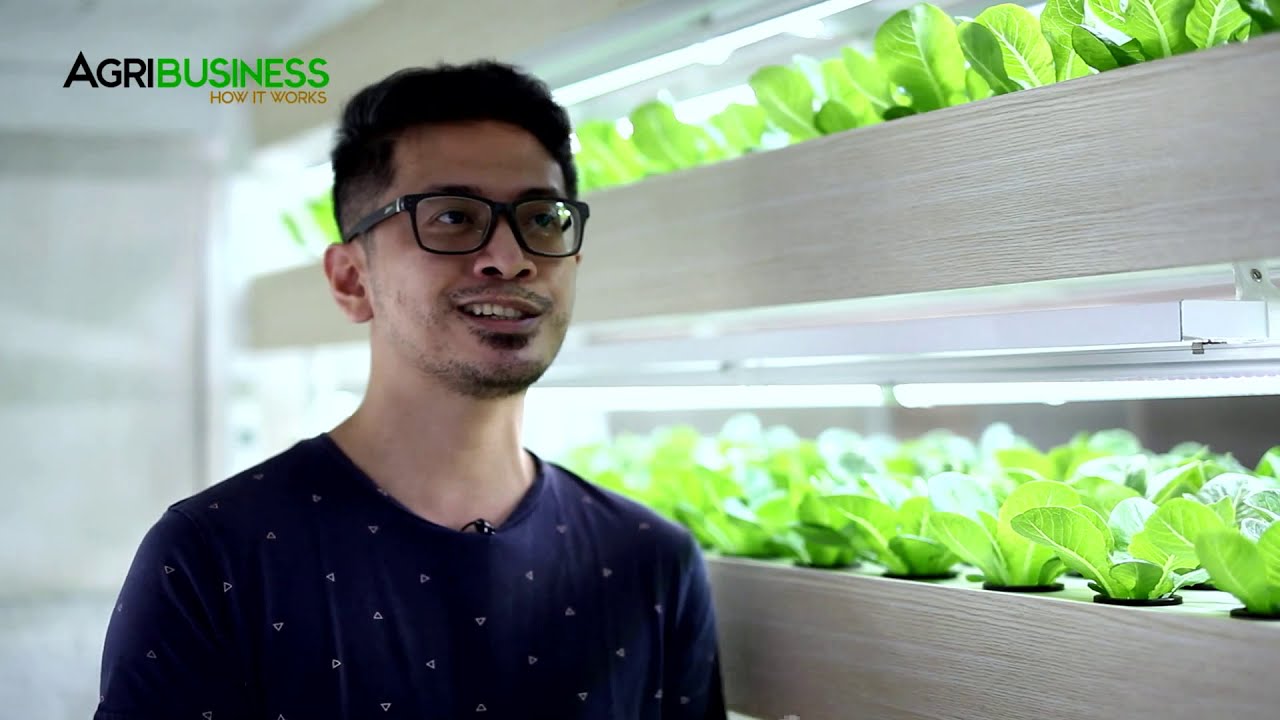The video above features a home farmer from Metro Manila, showing the step-by-step process for anyone to start and succeed in hydroponic farming. The article below gives a primer on the basics and type of hydroponic farming.
Hydroponic Farming at Home: The Basics
Many gardeners are beginning to switch to Hydroponics gardening for many different reasons. Hydroponic garden systems are small. One can and easily grow them inside and are ideal for most vegetables, especially lettuce, red tomato, and other vegetables. Also, the equipment required for Hydroponics gardening is not expensive, and they are relatively easy to manage.

Hydroponic farming or gardening, which anyone can easily start at home, is the growing of plants without soil, in other words, “dirtless gardening.” There are many Hydroponics gardening methods, most of which work better than regular soil gardening because it is easier to give the plant exactly what it needs when it needs it. Plants will only receive what you give them; therefore, you will regulate the pH, nutrients, nutrient strength, water amount, and light amount. This makes it imperative that you research the kind of plants you will be growing to know what they need to survive.
Home farmers setup Hydroponic systems to grow lush, healthy indoor plants, good quality vegetables, fruits, and herbs. Plants absorb nutrients as simple ions in water. The nutrients in the soil dissolve in water, and the plant roots absorb them. When the plants get adequate nutrients, they no longer require the soil to thrive. With proper nutrients and the right artificial light source, an indoor gardener can achieve amazing results. A completely controlled environmental agriculture system should have controlled light, temperature, water, CO2, oxygen, pH, and nutrients.
Hydroponic farming, even at home, is simple to start and efficient. On alternate days, check the pH, and top up the water level. Change the nutrients every 7 – 12 days. Use a timer to turn the light and garden on and off automatically, a timer. Among the different Hydroponics forms, deep water is the purest form since the roots are directly exposed to the nutrient solution. “Deep Water” systems use a small air pump to keep the solution well oxygenated.
Hydroponic Farming at Home: Different Types
Another method of Hydroponics is the Ebb & Flow or Flooding & Draining systems. The root system and growing mediums like Rockwool are soaked at specific intervals. The Ebb & Flow method makes it easier to cultivate plants in minimal space. In Deep Water Culture (DWC), the roots are allowed to drop down into an aerated nutrient solution. This solution is aerated with the help of standard aquarium pumps and sir stones. The solution must be topped up from time to time. Drip feeding is similar to Ebb & Flow, except that the pump delivers a continuous tickle of nutrients and water. The emitters run 5 to 10 minutes every hour.
Another Hydroponics method is Wick feeding, where the plant draws water with the help of a wick, which runs from the base of the plant container to a bottle of nutrient feed solution. Through capillary action, the solution travels up to the plant through the wick. In Raft cultivation, farmers insert the plants inside sheets of expanded polystyrene with the roots hanging down through the holes. One then floats the sheet in a shallow tank of nutrient solution. In the Nutrient film technique (NFT), the plants grow through light-proof plastic films placed over shallow, gently sloping channels. The roots grow into dense mats with a thin film of nutrients passing over them. Aeroponics is a type of hydroponics where one suspends the roots of a plant in the midst of the fog of nutrient-rich solution.

Hydroponics use different types of media. Expanded clay, Rockwool, Coco coir, Perlite, Vermiculite and Oasis root cubes are some of them. Due to constant problems of chemicals and other contaminants in the food supply, people are looking for a safer alternative. Hydroponics fits the requirement appropriately.
Hydroponics gardening is only as difficult as you make it. How to start hydroponic farming is not usually a matter of how but when. It can be not very hard with computers with sensors to control water cycles, nutrients, and light for the plants. However, it can also be as simple as a hand watered bucket with a single plant. Hydroponics system is usually made up of a few basic things: a growing tray, light (natural or artificial), a reservoir, a water controlled pump for watering (or some watering equipment), some form of air pump to give oxygen to the nutrients.
Hydroponic Farming at Home: Growing Media
The growing medium used in Hydroponics gardening can be any number of things, such as Rockwool, perlite, coconut fiber, gravel, sand, vermiculite, or even air. You can get instructions from a gardening store or online or buy separate parts and build your own. Ready-assembled kits are also for sale in gardening supply stores.
Certain micro-nutrients are necessary for healthy plant growth, including magnesium, sulfur, calcium, cobalt, boron, iron, copper, manganese, and zinc. These nutrients are essential to plants, and if missing, it could cause the food not to be as healthy and even cause health problems for those who eat it. You must use a quality fertilizer when Hydroponics gardening.
Another important aspect of Hydroponics gardening that must be closely regulated is the pH balance. When the pH balance varies, the plants will lose the ability to absorb nutrients that it needs. The ease and control of the different elements of Hydroponics gardening give it a huge advantage over regular dirt gardening.









